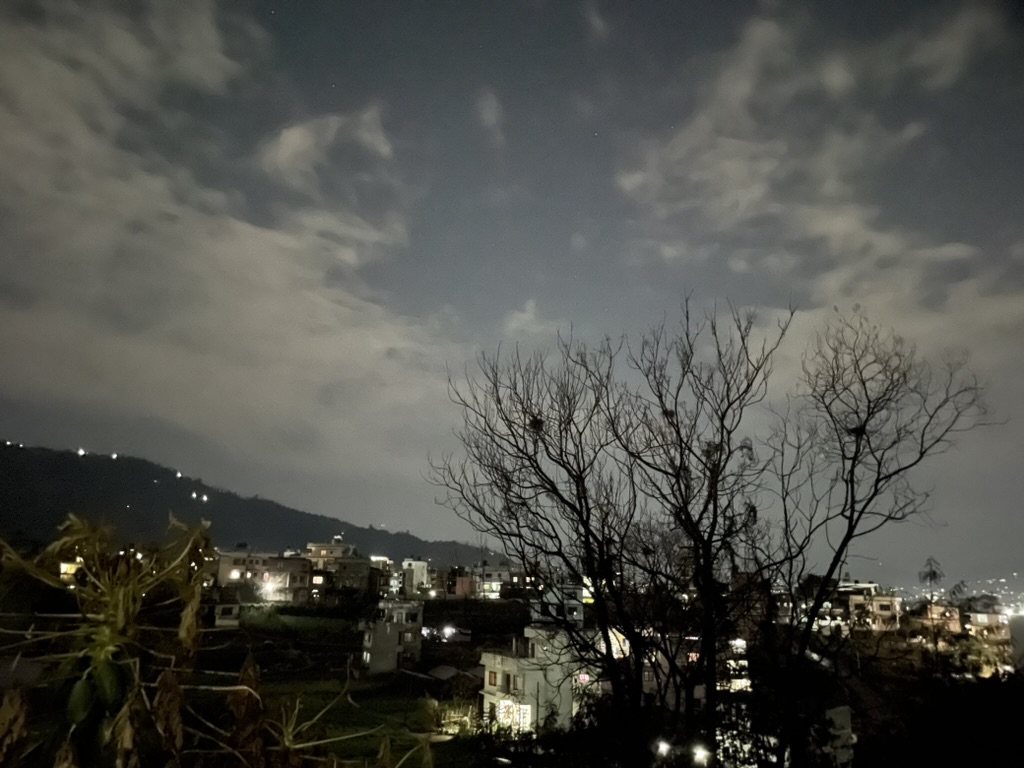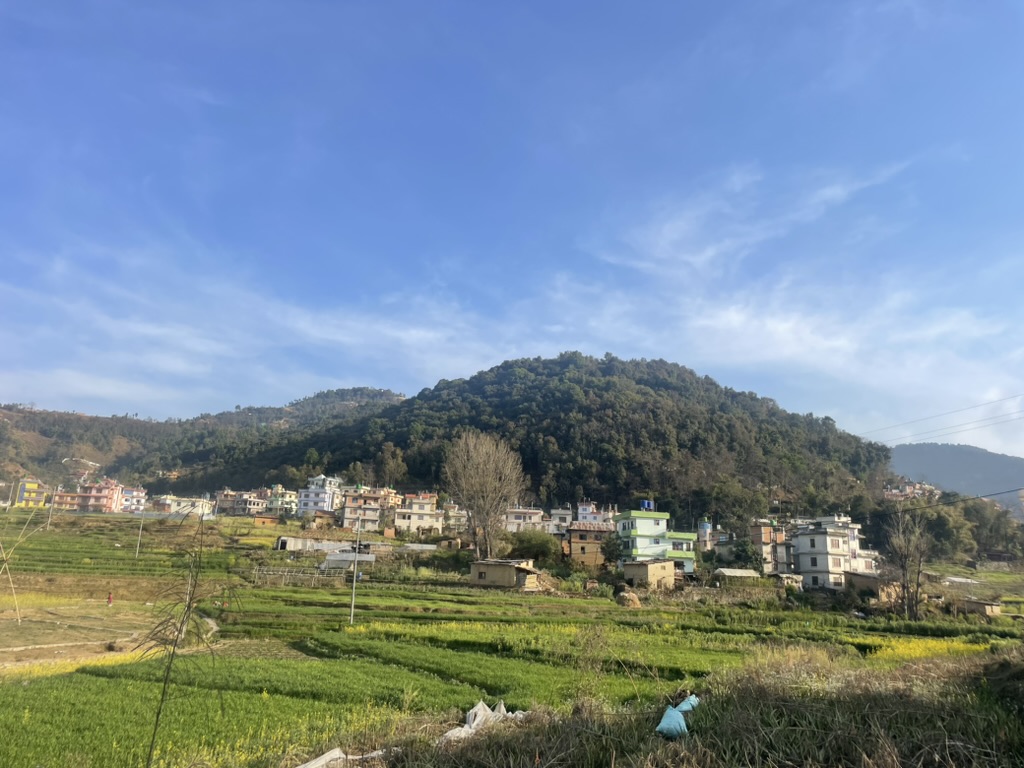The following reflections utilize creative writing techniques I learned in an English course dedicated to the practice of place-based and nature writing. I applied these ideas as a methodology for reflecting on significant places from my off campus immersion experiences.
Siruar, Bhaktapur, Nepal.
A Candle and a Bell
I stand on the little green porch of my host family’s home as a storm approaches. The left arch of the sky fades pale blue to an even paler orange – threaded with soft, streaking clouds. The right arch of the sky is such a deep indigo that I inhale audibly. The looming rain tints the sky with confusion, torn between dusk and dawn. I hear the warm sound of metal against metal emanating from adjacent homes – bells ring out as the evening puja rituals commence.
Branches adjacent to my second floor perch whip their leaves, a neighbor’s candle burns against the northern darkness, a motorcycle’s drone increases speed in an urgent surge towards home. The world seems to quicken, to enliven, to become more full. Within this swell it is the candle that holds my attention and traps my gaze. Its round, orange glow bathes the outdoor altar with rippling light. Rain drops begin to fall, the sky loses its blue, my eyes trace the flame as its flicker melts to stillness.
It is within moments such as this that I begin to recognize the patterns of daily life in this neighborhood. Moments of ritual practice, social connection, household work, and end of day relaxation entangle throughout the evening to create an organic yet steady rhythm. I will always be grateful for that little green porch and the space that it gave me to listen more deeply to the world around me.
The Family Farm
On the small family farm, my host family has a cow, or gai in Nepali. She is visibly strong – so strong that I stand tentatively with my back against the stone wall. Her muscles ripple as she stretches her neck towards straw and grass. Her stomach curves in a maternal gesture. Kneeling by the fire, I stir warm grains as they simmer in a cast iron pot. The warmth of the flames rests at the fold of my stomach. I instinctually turn my gaze back to her. Eyes like oversized marbles lock against mine. They are deeply brown and framed by long lashes that flutter arhythmically. Her forehead is peppered with red powders, her hind legs speckled with mud.
My host mother enters the room and the stillness breaks. She carries new grasses in swaths of red cloth and lays them to the ground with the leverage of her shoulder. Tucking her blade into a crack in the wall, she surveys the space with hands against her hips – a release of tension in the back, the hips, and the chest. We fill the trough with water and begin the walk home through the rice paddies.
I will always be grateful that I got to spend this time with my host mother each day. While we cared for the cow, we talked about her day, and mine. While I write about these experiences with fondness and with gratitude, it feels important not to romanticize them. My host mother labors tirelessly on the farm every day – what was a four month experience for me is the fabric of her daily life. She is the strongest woman that I have ever met.

